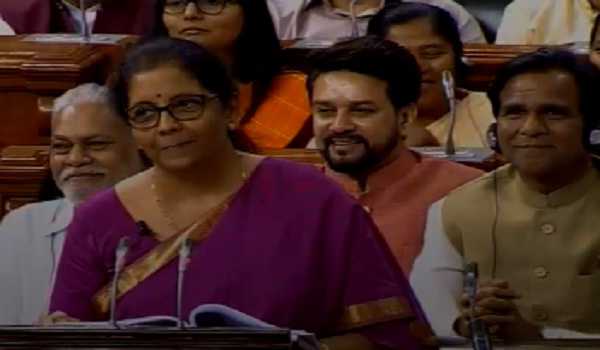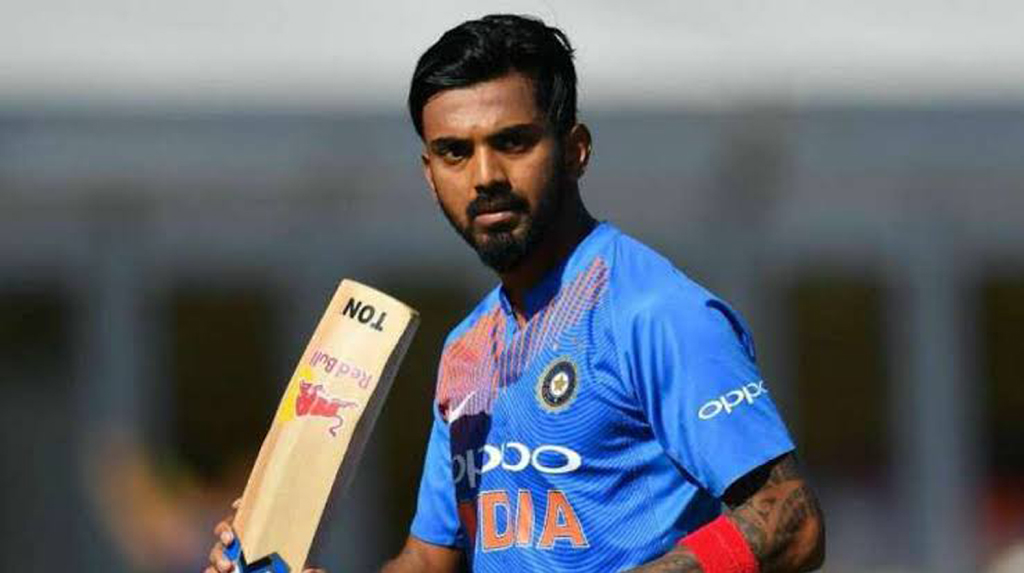The Union Budget 2019-20 stresses upon the need for heavy investment in infrastructure, digital economy and job creation in small and medium firms to fulfil the aspiration of making India a 5-trillion dollar economy.
While presenting her first Budget in Parliament on Friday, finance and corporate affairs minister Nirmala Sitharaman pointed out that the Indian economy had added one trillion dollar in the last five years due to the various initiatives and reforms undertaken by the government and was poised to grow to be a 3-trillion dollar economy in the current year.
Underlining the importance of “Make in India” for fulfilling this goal, the minister has proposed a number of initiatives as part of a framework for kick-starting the virtuous cycle of domestic and foreign investments.
Talking about the importance of programmes like Pradhan Mantri Gram Sadak Yojana, Industrial Corridors, Dedicated Freight Corridors, Bhartamala, Sagarmala, Jal Marg Vikas and UDAN for enhancing physical connectivity through various modes, the finance minister said these initiatives would improve logistics, reduce the cost of transportation and increase the competitiveness of domestically produced goods.
For civil aviation sector, the minister said that the government would implement the essential elements of a regulatory roadmap for making India a hub for aircraft financing and leasing activities. This is critical to the development of a self-reliant aviation industry, creating aspirational jobs in aviation finance, besides leveraging the business opportunities available in India’s financial Special Economic Zones (SEZs) and International Financial Services Centre (IFSC).
She also said that the government would adopt suitable policy interventions to create a congenial atmosphere for the development of Maintenance, Repair and Overhaul (MRO) industry in the country.
For the Railways, the Budget has proposed using Public-Private Partnership to unleash faster development and completion of tracks, rolling stock manufacturing and delivery of passenger freight services.
The finance minister informed that 657 km of Metro Rail network had become operational across the country. She also said that India’s first indigenously developed inter-operable transport card based on National Common Mobility Card (NCMC) standards, which was launched in March this year, would make travel across various modes convenient for people.
Talking about phase-II FAME Scheme that encourages faster adoption of electric vehicles, the minister said that only advanced battery and registered e-vehicles would be incentivised under the scheme with greater emphasis on providing affordable and environment friendly public transportation options for the common man.
For the highways, Sitharaman has said that the government would carry out a comprehensive restructuring of National Highway Programme to ensure that the National Highway Grid of desirable length and capacity is created using financeable model. After completing the Phase 1 of Bharatmala, states will be helped to develop State road networks in the second phase.
Talking about the government’s vision for using rivers for cargo transportation, the finance minister said that the movement of cargo volume on the Ganga was estimated to increase by nearly four times in the next four years.
This will make movement of freight, passenger cheaper and reduce import bill, according to her. In this regard she mentioned the Jal Marg Vikas project for enhancing the navigational capacity of the Ganga, and said that two multi-modal terminals at Sahibganj and Haldia and a navigational lock and Farrakka would be completed this year.
The finance minister has further said that in order to take connectivity infrastructure to the next level the government would make available a blueprint this year for developing gas grids, water grids, i-ways, and regional airports. This is based on the successful, One Nation, One Grid model that has ensured power connectivity to states at affordable rates.
She further announced that the recommendations of the High Level Empowered Committee (HLEC) on retirement of old and inefficient plants, and addressing low utilisation of gas plant capacity due to paucity of natural gas, would also be taken up for implementation now.
Sitharaman also said that the government was examining the performance of Ujjwal DISCOM Assurance Yojana (UDAY) to improve it further.
She said the government would work with the state governments to remove barriers like cross subsidy surcharges, undesirable duties on open access sales or captive generation for Industrial and other bulk power consumers. Besides these structural reforms, considerable reforms are needed in tariff policy. A package of power sector tariff and structural reforms would soon be announced.
In the housing sector, the finance minister announced that several reforms measures would be taken up to promote rental housing and a model tenancy law would soon be finalised and circulated to the states.
She further said that public infrastructure and affordable housing would be taken up through innovative instruments such as joint development and concession on land parcels held by central public sector enterprises.
For the MSME sector, Rs.350 crore has been allocated for FY 2019-20 under the Interest Subvention Scheme, for 2 per cent interest subvention for all GST registered MSMEs, on fresh or incremental loans.
The finance minister further said that the government would create a payment platform for MSMEs to enable filing of bills and payment. This will help eliminate delays in payment and give a boost to investment in MSMEs.
The finance minister announced that the government had decided to extend the pension benefit to about three crore retail traders and small shopkeepers whose annual turnover was less than Rs.1.5 crore under a new scheme, Pradhan Mantri Karam Yogi Maandhan Scheme. Enrolment into the scheme will be kept simple requiring only Aadhaar and a bank account and rest will be on self-declaration. (UNI)



